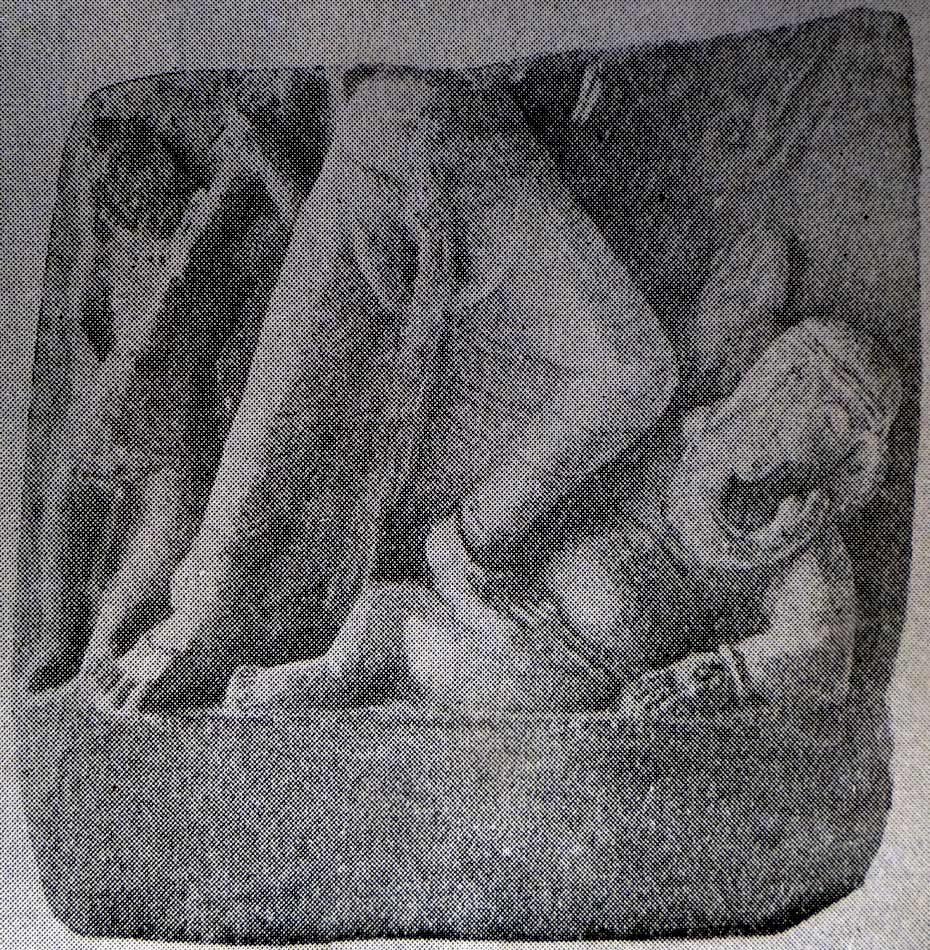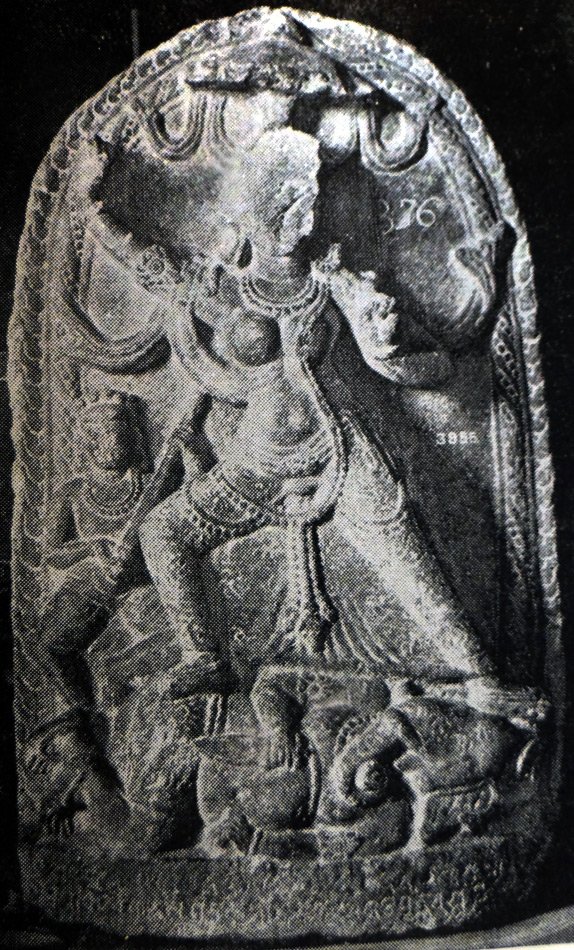The Indian Buddhist Iconography
by Benoytosh Bhattachacharyya | 1958 | 51,392 words | ISBN-10: 8173053138 | ISBN-13: 9788173053139
This page contains an iconography image of Emanations of Ratnasambhava: Aparajita and represents figure 189-190 of the book Indian Buddhist Iconography, based on extracts of the Sadhanamala English translation. These plates and illustrations represent either photographs of sculptures or line-drawing reproductions of paintings or other representations of Buddhist artwork.
Figure 189-190 - Emanations of Ratnasambhava: Aparājitā
 Fig. 189: Aparājitā (Nalanda) |
 Fig. 190: Aparājitā (Indian Museum) |
Colour: yellow;
Identification mark: trampling upon Gaṇeśa;
Mudrā: capeṭadāna (slapping).
The name of Aparājitā occurs in the Dhyāna for Aṣṭabhujā Kurukullā already quoted and translated. There she is said to bear the image of Ratnasambhava on her crown, and to carry in her four hands the staff, the goad, the bell and the noose, Aparājitā is an interesting Buddhist goddess. She tramples upon Gaṇeśa, and one of her hands is raised in the attitude of dealing a slap, while her parasol, according to the Sādhana, is held by important Hindu gods. A very short Sādhana is devoted to her worship, and the Dhyāna contained in the Sādhana describes the form of Aparājitā.
In the Sādhana one epithet of the goddess deserves special notice. It is Gaṇapatisamākrāntā “Who tramples upon Gaṇapati”. The word ‘ākrānta’ is derived from the original root ‘kraṃ’ to ‘trample’. On the strength of this epithet of the goddess the Nālandā fragment (Fig. 189) showing only the lower half of the full image is identified with that of Aparājitā. In it, the figure to the right of the principal goddess appeals to be Indra and the rod held by him seems to be the handle of the parasol required to be held over her head by the gods beginning with Brahmā. The upper part of the Nālandā image is unfortunately lost. Had it been complete, it would have been possible to find the Capeṭadanā-mudrā in the right hand of the goddess and the noose with the raised index finger in the left, and a parasol over her head in continuation of the broken handle. This identification was confirmed when subsequently the Indian Museum image (Fig. 193) was discovered. This image is only slightly mutilated but is complete, and resembles the Nālandā fragment in the lower portion, while the whole image follows with precision, the directions given in the Sādhana quoted above. This new discovery leaves no room for doubt regarding the identification.
Aparājitā is known in China.
